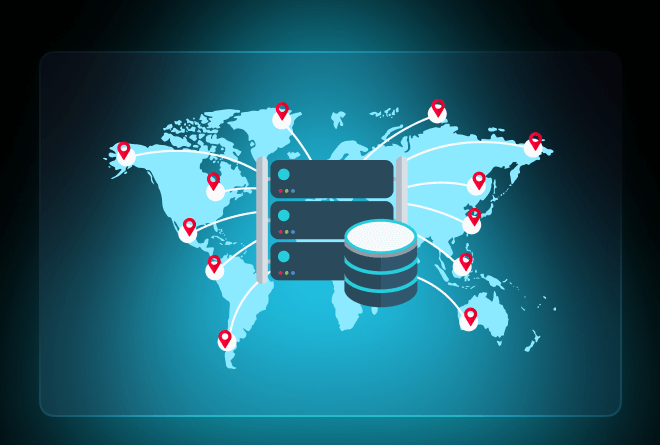Optimizing Server Performance for Faster Website Loading

In today’s digital world, speed is everything. Whether you’re running an eCommerce platform, a portfolio site, or a content-driven blog, fast website loading is non-negotiable. According to Google, even a one-second delay in load time can reduce conversions by up to 20%. But while optimizing your front-end code and compressing images are important, true performance gains often start on the server side.
Server performance has a direct impact on how quickly your website can respond to user requests, process data, and deliver content. If your server is underperforming, no amount of on-page optimization will deliver the fast, seamless experience users expect.
This article explores the critical aspects of server performance and offers actionable strategies for optimizing it, helping your website load faster, perform more efficiently, and ultimately offer a better user experience.
Why Server Performance Matters
The server is the foundation of your website. It handles incoming requests, processes dynamic content, and delivers files to users across the world. When server performance is poor, everything else suffers—loading times increase, bounce rates rise, and search engine rankings decline.
Search engines like Google factor page speed into their algorithms. A slow-loading site not only frustrates users but can also be penalized in search rankings. Additionally, users have high expectations for site responsiveness. Most will leave a site that takes longer than 3 seconds to load. That’s a very narrow window in which to make a positive first impression.
Therefore, optimizing your server is not just about making your site faster—it’s about retaining visitors, improving SEO, and increasing conversions.
Common Causes of Slow Server Performance
To improve server performance, you first need to understand what might be slowing it down. Here are some common culprits:
- Overloaded Shared Hosting: If you’re on a shared hosting plan, your server resources are divided among many users. When one website consumes more than its share, others suffer.
- High Latency: The physical distance between your server and your visitors affects latency. The farther the data has to travel, the longer it takes to load.
- Insufficient Server Resources: Not enough RAM, CPU power, or disk space can bottleneck your site, especially during traffic spikes.
- Unoptimized Backend Code: Poorly written scripts, unnecessary plugins, or inefficient database queries can overload the server.
- Old or Misconfigured Software: Running outdated versions of PHP, Apache, MySQL, or other software components can slow performance or introduce vulnerabilities.
- Lack of Caching: Every time a user visits your site, the server has to regenerate content from scratch unless proper caching mechanisms are in place.
- High Traffic Without Load Balancing: As your site grows, so does the demand on your server. Without load balancing, this can lead to server crashes or degraded performance.
Best Practices for Optimizing Server Performance
Now that you understand what slows your server down, let’s look at how to improve its performance. Here are key strategies to make your server faster and more efficient.
1. Choose the Right Hosting Provider and Plan
Your hosting provider plays a critical role in performance. If you’re currently on shared hosting and experiencing slow speeds, it may be time to upgrade. Consider these options:
- VPS (Virtual Private Server): Offers better resource allocation and more control than shared hosting.
- Dedicated Server: Provides maximum power and flexibility, ideal for high-traffic sites.
- Cloud Hosting: Scalable and reliable, with the ability to allocate resources on demand.
Always review your hosting provider’s uptime guarantee, infrastructure, and customer support before making a decision.
2. Implement Server-Side Caching
Caching reduces the time it takes to generate and deliver content. Popular caching mechanisms include:
- Opcode Caching: Stores compiled PHP code in memory for faster execution (e.g., using OPcache).
- Object Caching: Saves frequently used data in memory to reduce database queries (e.g., Redis or Memcached).
- Full-Page Caching: Delivers static HTML versions of pages to avoid regenerating them on every request.
Many content management systems, like WordPress, support plugins and configurations for server-side caching. If you’re using NGINX or Apache, additional caching can be configured at the web server level.
3. Use a Content Delivery Network (CDN)
A CDN distributes your content across multiple servers around the world, so users receive data from the closest location. This significantly reduces latency and accelerates content delivery.
Popular CDNs like Cloudflare, KeyCDN, and Akamai not only improve performance but also offer added security benefits, such as DDoS protection and SSL handling.
4. Optimize Your Database
Databases are the heart of many dynamic websites, but over time they can become bloated and slow. Here are ways to keep your database efficient:
- Indexing: Properly indexed tables speed up query times.
- Regular Cleanups: Remove unnecessary records, revisions, and transient data.
- Optimize Queries: Ensure SQL queries are efficient and use joins and filters wisely.
- Use a Separate Database Server: For large-scale operations, consider offloading your database to a dedicated server for improved performance.
5. Upgrade Server Software
Outdated software can be a drag on performance and a risk to security. Make sure you are running the latest stable versions of:
- Web server software (NGINX, Apache)
- Scripting languages (PHP, Node.js)
- Database engines (MySQL, PostgreSQL)
- CMS platforms (WordPress, Joomla, etc.)
Newer versions often come with performance enhancements and security patches that can dramatically improve server response times.
6. Enable GZIP Compression
GZIP is a simple and effective way to reduce the size of the files your server sends to users. By compressing files like HTML, CSS, and JavaScript, GZIP can reduce transfer sizes by up to 70%, resulting in faster load times and lower bandwidth usage.
Most modern web servers support GZIP, and it can typically be enabled via server configuration files or control panels.
7. Monitor Server Load and Performance Metrics
Performance optimization is not a one-time task—it requires ongoing monitoring and adjustments. Tools like New Relic, Datadog, or even basic server monitoring solutions can track:
- CPU usage
- Memory utilization
- Disk I/O
- Network throughput
- Application response times
Analyzing these metrics helps identify bottlenecks and make informed decisions about scaling, upgrading, or optimizing specific components.
8. Minimize Third-Party Dependencies
While plugins, scripts, and integrations can add valuable features to your site, they can also increase load times and server demand. Audit your site regularly and remove unnecessary:
- WordPress plugins
- External tracking scripts
- Embedded media
- JavaScript libraries
Stick to only the essentials, and choose lightweight, well-coded alternatives whenever possible.
9. Use Load Balancing for Scalability
If your site is experiencing high traffic or planning for rapid growth, consider implementing a load balancer. Load balancers distribute incoming traffic across multiple servers, reducing the risk of overloading a single server.
They also increase redundancy—if one server fails, the others can pick up the slack, ensuring consistent uptime and performance.
10. Invest in SSD Storage
Compared to traditional HDDs, SSDs (Solid-State Drives) offer significantly faster read/write speeds. If your server still runs on spinning disks, switching to SSDs can result in dramatic performance improvements, especially for database-driven sites.
Most modern hosting providers now offer SSD-based hosting, but it’s worth confirming before making a switch.
Speed Is a Competitive Advantage
Server performance optimization is often overlooked in favor of front-end tweaks, but it’s one of the most impactful ways to enhance website speed. A faster-loading website not only improves user experience and reduces bounce rates, but also supports better SEO rankings and conversion rates.
By choosing the right hosting solution, implementing smart caching, optimizing databases, and keeping your server stack lean and current, you position your website to perform at its best—today and as it grows.
In a digital economy where users expect instant access and flawless functionality, every millisecond counts. Start with the server, and you’ll build a faster, stronger, more competitive online presence from the ground up.



